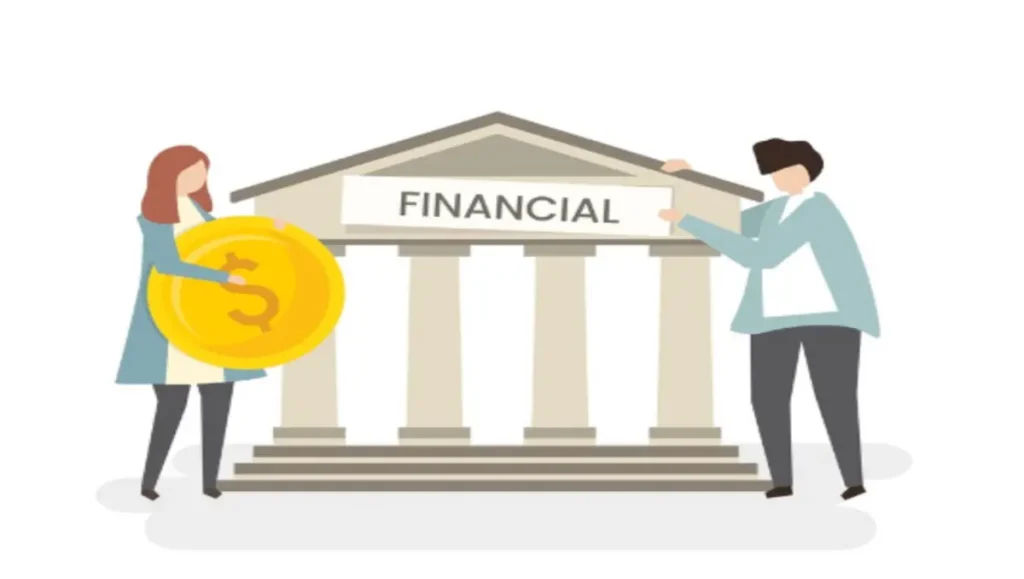When you’re in need of funding from a bank, it sometimes seems to be walking through a maze. If you need a personal loan, a business loan, a mortgage, or an auto loan, being aware of the process, realizing what banks want, and preparing well can make a huge difference in being able to get it.
In this step-by-step guide, we will take you through all you need to know to get financing from a bank successfully. From getting your paperwork ready to knowing the different types of loans, we’ll equip you with everything you need to do it with confidence.
1. Know the Types of Loans Available
Before we move on to the application process, let’s learn first about the kind of funding you’re applying for. Banks provide a range of loans that fit various needs:
Personal Loans
Personal loans are usually unsecured, i.e., they do not call for collateral. They may be utilized to pay for any type of purpose, such as for debt consolidation, education expenses, or for covering unforeseen medical bills. The amount of the loan and interest rate will vary based on your financial condition and credit worthiness.
Business Loans
If you’re a small business owner or entrepreneur, taking a business loan can enable you to expand your operations, pay for operational expenses, or venture into new markets. Business loans usually call for a comprehensive business plan, collateral, and a financial track record of stability.
Mortgages
Mortgage is a type of loan borrowed to help buy a house. The house acts as collateral, so if you do not repay, the bank will take possession of the property. The transaction includes making a down payment, repayments monthly, and usually a fixed or adjustable rate of interest. Your credit score, income, and debt-to-income ratio are important when obtaining a mortgage.

Auto Loans
If you’re purchasing a vehicle, you’ll probably need an auto loan. They are usually collateralized by the vehicle being bought. Banks will consider the worth of the vehicle, your credit report, and your repayment capability before sanctioning the loan.
2. Check Your Credit Score
Your credit score matters a lot when determining whether you’ll be approved for a loan or not. The banks will use this score to determine your credit worthiness. The higher the score, the less risky you are to lend money to, and this could mean the conditions of the loan will be better, e.g., interest rates lower.
How to Check Your Credit Score
Before you apply for a loan, review your credit score. You can obtain a free report from one of the major credit bureaus such as Equifax, Experian, or TransUnion. If your score is less than optimal, take steps to correct it before you apply for financing.
Some of the ways to increase your credit score include:
- Clearing outstanding debts.
- Lowering credit card balances.
- Making timely payments.
- Checking your credit report for errors.
3. Obtain Required Documentation
Banks will request some documents to evaluate your financial position and whether you are eligible for finance or not. Being prepared with required paperwork can speed up the process and show your seriousness to the lender. Below is what you might be required to provide:

Personal Identification and Address Proof
You’ll also be asked for personal identification, like your passport or driver’s license. A utility bill or lease agreement can also be used to prove your address.
Proof of Income
Banks would also like you to prove that you have the financial capability to repay the loan. They’ll probably request:
- Your recent pay stubs or salary slips.
- Tax returns (most likely for the past two years).
- Bank statements indicating regular deposits.
- For business loans, tax returns of your business, profit-and-loss statements, and balance sheets.
Credit History
Your credit history will be examined by the bank in order to analyze your history of borrowing and debt management in the past. These include loans, credit card accounts, and also past bankruptcies or defaults.
Collateral (for Secured Loans)
For secured loans (such as mortgages or auto loans), you’ll need to provide collateral. This may be your house, vehicle, or other valuable assets. The bank holds collateral as security in case you fail to repay the loan.
4. Shop Around Among Different Lenders and Loan Products
Whereas most individuals make their initial bank their top bank for loans, it is always prudent to compare various offers from different lenders. Varying banks have different loan products, rates, charges, and terms. Take these into consideration when selecting a bank to go to:
Interest Rates
Interest rates are one of the most critical factors in a loan. Even a small difference in the interest rate can have a significant impact on the total amount you’ll pay over the life of the loan. Check with several banks to find the most competitive rates.
Loan Terms
Loan term may be as short as a few months or as long as a few years, and the loan term affects your monthly rate and total interest paid. Some individuals like shorter terms in order to repay the loan quicker and avoid more interest, but others might choose extended terms to make lower monthly payments.
Fees
Beware of additional charges, including application charges, processing charges, or prepayment penalties. These extra fees can help accumulate, and the loan becomes pricier than you expect.
Loan Amount and Repayment Flexibility
Ensure that the amount of the loan is appropriate for your requirement and ask about the repayment plan’s flexibility. Some loans provide the facility to make additional payments without any penalty, while other loans may have limitations.
5. Prepare a Strong Loan Application
When applying for a loan, your application needs to be complete, accurate, and compelling. Here are a few tips for ensuring your loan application stands out:
Be Transparent and Honest
Always provide honest and accurate information on your application. Banks use your details to assess your creditworthiness, and providing false information can lead to your application being denied.
Provide a Clear Purpose for the Loan
If you’re taking a personal loan, mortgage, or business loan, being able to describe how you plan to use the money may be able to better enable the bank to see where you’re going. If you’re getting a business loan, having a solid business plan demonstrating how you will utilize the funds and make money may give you an edge.
Emphasize Your Financial Stability
Highlight your repayment capacity in your application. If you possess stable jobs, a good income level, and a history of debt repayment, make sure to point these out. A solid financial history indicates that you are a good bet as a borrower.
6. Carefully Read and Make Sense of the Loan Terms
Once you’ve submitted your application, the bank will assess your financial background and decide whether or not to approve your loan. If approved, you’ll be presented with a loan offer. Take the time to carefully review the terms of the loan before accepting it.
Key aspects to consider include:
Interest Rate: Is it fixed or variable? What is the annual percentage rate (APR)?
- Repayment Schedule: When is the payment due, and what happens if you miss a payment?
- Loan Term: How many months will you be paying the loan back, and how will the term influence your monthly payment?
- Additional Costs: Are there any additional charges, such as processing fees or prepayment penalties?
- Be sure you’re happy with all of the terms before signing the loan contract.

7. Apply
Once you’ve assembled your documents, compared loans, and finalized your application, it’s time to apply. Most banks permit you to apply online or in person. The process can take a few days to a couple of weeks, depending on the loan and the complexity of your application.
Online vs. In-Person Applications
- Online Applications: Quicker and more convenient, online applications enable you to apply in the comfort of your own home. The disadvantage is that you may not get as much direct contact with the lender.
- In-Person Applications: Going to the bank enables you to build a direct relationship with the lender, which may be helpful in certain situations. Also, you can pose questions and get any questions cleared throughout the process.
8. Wait for Approval and Get Funds
Once you have submitted your application, the bank will review your credit score, financial information, and other details. When approved, you will be informed about the loan amount, interest rate, and repayment details.
When you approve the loan offer, the money will be given. Depending on the nature of the loan, you will either get a lump sum (as in the case of a personal loan or mortgage) or a series of payments (like in the case of a business loan).
Conclusion
Getting finance from a bank is a process that requires careful preparation, understanding of the loan options available, and an honest evaluation of your financial situation. By following the steps outlined in this guide, you’ll be in a much better position to successfully secure financing.
read more
https://financekhush.com/retirement-funds-secure-your-financial-future/
here are top 10 best faq
1. What is Bank Finance?
Bank finance refers to the financial services and products provided by banks, including loans, credit, mortgages, and investment services to individuals, businesses, and institutions.
2. How do Banks Provide Financing?
Banks provide financing through various products like personal loans, business loans, lines of credit, mortgages, and credit cards, helping individuals and companies meet their financial needs.
3. What is the Difference Between Debt Financing and Equity Financing?
Debt financing involves borrowing money, usually through loans or bonds, to be repaid with interest. Equity financing involves selling shares of a company to raise capital, giving up a portion of ownership.
4. What Types of Loans Do Banks Offer?
Banks offer several types of loans, including personal loans, auto loans, mortgage loans, business loans, student loans, and home equity loans, each designed for specific purposes.
5. How Does Interest Work in Bank Loans?
Interest is the cost of borrowing money. It is calculated as a percentage of the principal loan amount. The rate can be fixed or variable, depending on the type of loan and terms set by the bank.
6. What is a Credit Score, and How Does It Affect Bank Financing?
A credit score is a numerical representation of an individual’s creditworthiness. Banks use it to assess the risk of lending. A higher credit score increases the chances of securing financing at favorable terms.
7. What Are Bank Fees Associated with Financing?
Banks charge various fees for financial services, including loan processing fees, late payment fees, annual fees for credit cards, and service fees for maintaining accounts or lines of credit.
8. How Can I Improve My Chances of Getting a Loan from a Bank?
Improving your credit score, maintaining a stable income, and reducing existing debt can help increase your chances of loan approval from a bank. Additionally, having a solid business plan (for business loans) or collateral (for secured loans) can be beneficial.
9. What is the Role of Banks in Business Financing?
Banks play a crucial role in business financing by providing loans, lines of credit, and financial advice, which help businesses grow, manage cash flow, and expand operations.
10. How Do Banks Assess Risk in Financing?
Banks assess risk by analyzing the borrower’s credit history, income, assets, and overall financial health. For business loans, they also evaluate market conditions, business plans, and collateral to determine the risk of lending.https://www.google.com/
